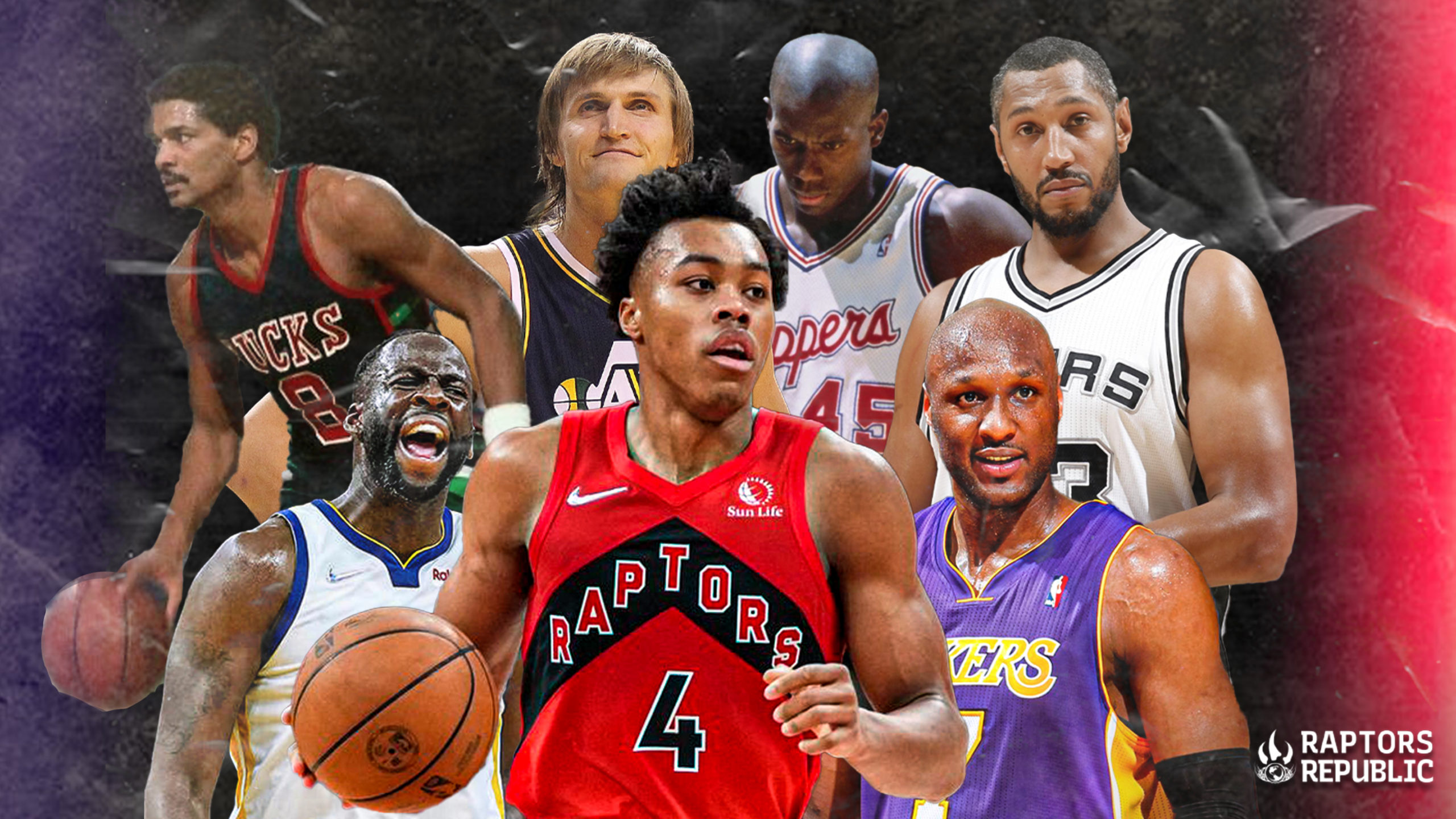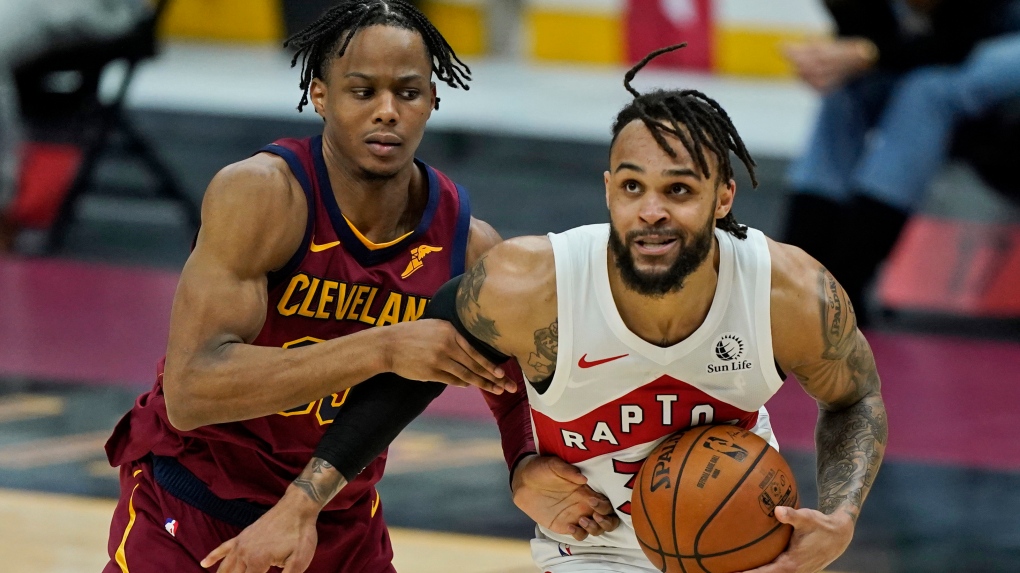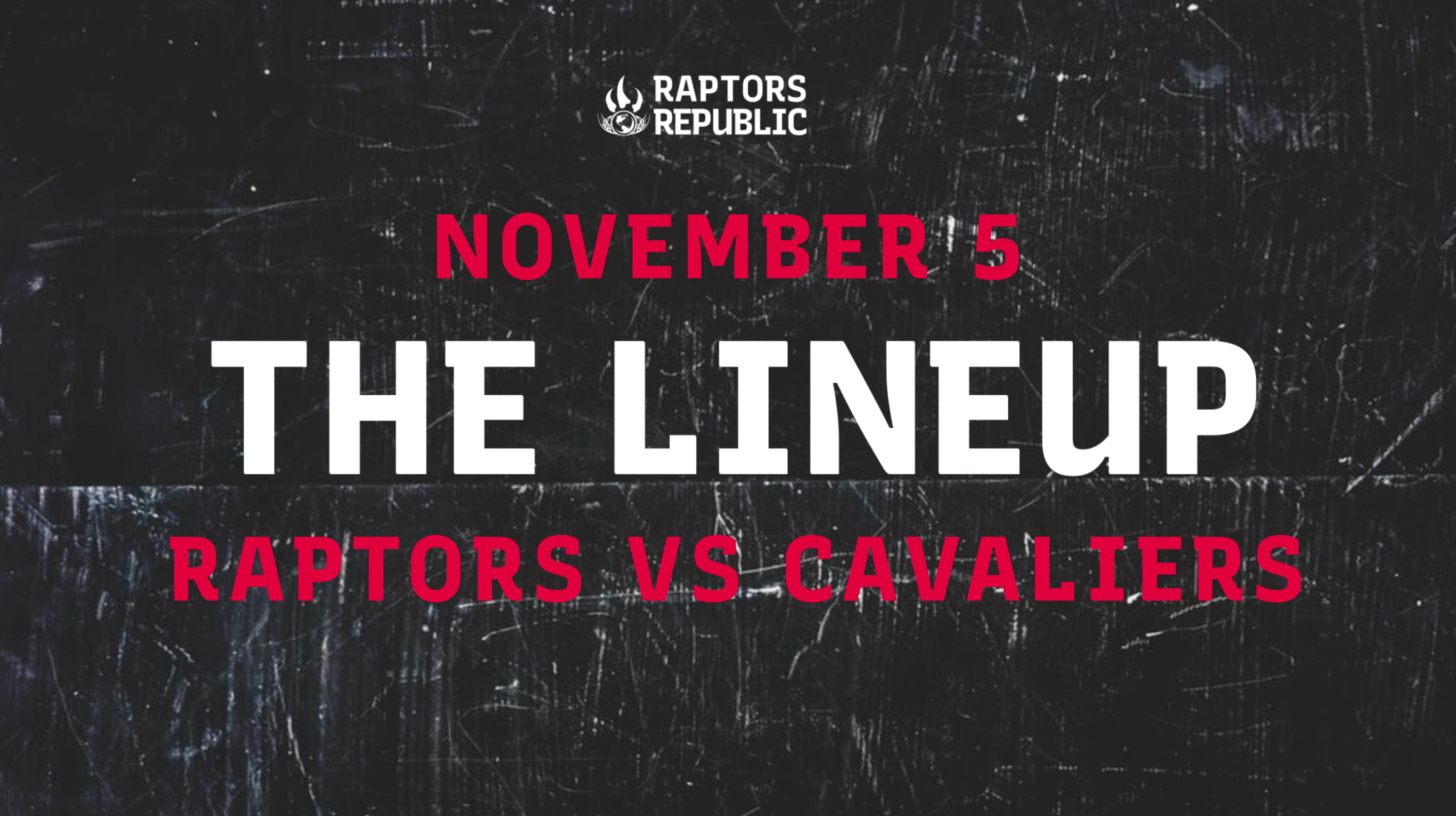Seven games into his NBA career, and Scottie Barnes has already emerged as the frontrunner for the Rookie of the Year Award (or at least I think he has), but even with that kind of running start off the starting blocks, he still has a long way to go. In my debut article with Raptors Republic, we will identify six players throughout NBA history that Barnes already bears some resemblance to — and into whom he could develop.
Scottie Barnes is not old enough to order a vodka cranberry on road trips, yet he’s already shown the ability to blow up plays at the point of attack, recognize high-level passing reads, knock down off-the-dribble jumpers, and execute silky smooth moves on his way to the rim. And this was just in one game!
The future is bright for The 6ix’s most recent lottery pick, and if he plays his cards right, there’s a real chance he matures into an All-NBA player someday, but that is if he plays his cards right. To do that, he’s going to need to become a scholar of the game and its history. He’ll need to survey its 75-year landscape in search of players with skillsets and archetypes similar to his, fusing the powers of those he finds to become a multi-faceted basketball Chimera.
That sounds like an arduous, time-consuming endeavor. Well, luckily for him, I’ve already done the leg work. Here are six players I think Scottie Barnes should be going back and watching some tape on.
Draymond Green
Let’s get the most obvious one out of the way. During my research for this article, I read countless scouting reports that listed Draymond Green as the player most comparable to the Florida State Forward. I can see the parallels to some extent (the passing, high motor, and defensive versatility), but Barnes reaching heights similar to a borderline top-75 player all-time would be (probably) his best developmental outcome. Still though, there are many different Green entrees that Scottie can add as staples in his diet.
There’s that preternatural instinct of his to grab and go on misses.
We’re already seeing some of this from Barnes early on.
Barnes would also do well to emulate some of Green’s primary playmaking abilities. We’ve witnessed Barnes make a handful of reads as a secondary/tertiary facilitator, but being able to orchestrate the offense as the lead conductor would go a long way to raising his offensive ceiling.
Lastly, we must mention The Dancing Bear’s box-outs on larger guys, as his proficiency there is one of the main reasons the Warriors can field a high-level defense with him at the five.
Barnes already has some of Green’s chops in transition, but for him to become his best self, he could stand to add more half-court responsibilities on both sides of the ball. Initiation and center defense are two ways to lift his ceiling.
Lamar Odom
Despite posting higher than league-average True Shooting (+4 rTS%), Barnes has struggled shooting it from downtown to start the year, knocking down an abysmal 22% of his 1.3 attempts per game. Lamar Odom wasn’t too much better, knocking down 31% of his 2.2 looks per game for his career, but he was still able to function as a high-level offensive player by deploying a strong drive-and-kick game that allowed him to create high-percentage outside looks for his teammates.
His aptitude for pressuring the rim also allowed him to earn easy points from the charity stripe, which is another area Barnes in which has had trouble, attempting only 4.9 free throws per 100 possessions. That’s a solid number but still far below Odom in his rookie season.
Even if Barnes never becomes an elite shooter, there are ways for him to become an elite offensive player. Learning to become even more like Odom could help, especially if Barnes becomes an elite off-the-bounce player, as a passer or to draw contact.
Marques Johnson
Speaking of restricted area regulars, MJ (I wonder how many times someone has called him that since 1984) was practically a master at weaponizing his length to extend his strides to a radius that enabled him to waltz his way into easy looks.
This elongation of movement is already one of Barnes’ defining traits. Improving in that area is just a matter of Barnes channeling his more aggressive nature.
One thing that I’ve noticed from watching Barnes so far this season is that while he may be a splendid transition initiator, he still needs to work on attacking the rim as a finisher on the break. This was no problem for the hyper-athletic Marques Johnson, as we see in this clip right here.
It’s hard for a rookie to know when to attack and when to cede the spotlight to more experienced teammates, but as Barnes matures, he needs to become more aggressive. He has elite length. Developing like Johnson did would help Barnes turn that length into a more potent weapon.
Andrei Kirilenko
If Scottie never figures it out as a jump shooter, to be at his most impactful he probably needs to serve as his team’s defensive anchor, as it’s hard to find great rim guardians who can also effectively space the floor. And since Barnes lacks the size of a traditional big, he’ll need to reach sage-levels as a weak-side rim protector. That’s where AK47 comes in.
Kirilenko averaged center-caliber block percentages for his career, including an insane 8.5 percent in the 2004-05 season. He wasn’t just great at protecting the perimeter. He was also a formidable defender picking up guards or forwards on the perimeter at the point of attack (something Barnes has been asked to do much of in his collegiate and early NBA career).
Watch here as Kirilenko twirls around a screen and goes stride for stride with Stephen Jackson on this possession.
In his Kirilenko video breakdown, Cody Houdek observed that while Kirilenko may have not been a strong outside shooter, he was very willing to pull the trigger. I think it is essential that Barnes rams this tendency into his psyche as even the shakiest of jump shooters can knock down rhythm jumpers with the right amount of confidence (just ask Jae Crowder).
Thus far, Barnes is averaging 1.8 three-point attempts per 100 possessions. Even if he doesn’t become more accurate, he could still help his team’s spacing by attempting more. And on the other end, his block percentage of 1.6 needs to improve for him to anchor his team defense.
Boris Diaw
It has really been grinding my gears early in the season watching opposing teams try and hide smaller defenders on Barnes and seeing him not channel his inner bully and take their lunch money. Part of this is because his teammates aren’t feeding him enough in these instances, but most of his inability to exploit these mismatches stems from his lack of a refined post-game. Diaw also struggled with this until the 2005-06 season when he faced his demons head-on, en route to a Most Improved Player of the Year Award.
Barnes has so much length that he can shoot over any small defender. But he’ll be at his most effective if he uses his aforementioned strides to maneuver around defenders. Diaw was a master post player, and Barnes could stand to adopt some of his skills.
Bo Outlaw
Bo carved out a decade-and-a-half long NBA career for himself despite not being a great jump shooter or scorer. He accomplished that feat by turning himself into an indefatigable locomotive. He never stopped moving around on the basketball court, and he used his high motor to turn himself into a great offensive rebounder.
Barnes looks like he’s programmed similarly, as he currently sits in the 89th percentile in percentage of team field goals converted into offensive rebounds, per Cleaning the Glass. If the jump shot never does come around, he’ll need to continue this unrelenting nature when it comes to collecting second chance opportunities.
In terms of the other end of the floor, Bo Outlaw currently sits at 8th all-time in Basketball-Reference’s Defensive Box Plus-Minus statistic (2.45), and while this doesn’t necessarily indicate he was an all-time level defender, it does shows that he was able to provide a great deal of value on that end of the floor when he was on the court. He did this primarily by leveraging his length (like many of the other players on this list) to create chaos for opposing teams.
I had the chance to catch up with Bo while working on this article (I initially interviewed him for my mini-series The Quest for the Best a while back), and he talked about the importance of getting a lot of off-ball reps early on in one’s basketball life, and how doing so enables one to develop greater court awareness and on-ball decision making later on in their careers. We’ve already seen this come to fruition a bit with Barnes as his time playing primarily off-ball on what may have been the greatest high school basketball team ever has turned him into one of the more cerebral players in our league. And I think his spatial mapping and “feel” for the game will only continue to improve the more he has to operate away from the ball in Nick Nurse’s offense.
Barnes has the length, offensive rebounding, and off-ball chops. As his game develops and in any or all of the directions laid out here, he’ll need to keep his motor to remain special.
Conclusion
Scottie Barnes is already really freaking good at that game called basketball, and there’s a puncher’s chance that he surpasses every single one of the six players discussed in this article; but for that to happen, he’d do well to study their skillsets religiously, and turn himself into an amalgamate of all their games.
It’s obviously a big ask for him to become a halfcourt initiator, aggressive driver to draw free throws, a better post player, and to keep his motor while becoming an elite rim protector. But those are only some of the directions in which he could develop. To do all would be incredible. But to do any would be a huge development for Barnes. His future thus lies in the game’s past.




